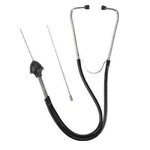tony_lth
Advanced Member level 5
When the board works in GSM mode, we can hear the buzz noise of the board. But in other mode, there is no buzz.
The most important noise is 5th harmonics of 217Hz (that is generated by GSM system).
How to solve that or decrease the noise?
Conditions:
1. There is one buck circuit, so maybe caused by the buck inductor. If so, how to detect it and how to solve it?
2. There are about 20 MLCC capacitances, those are 22uF and in 0603 or 0805 package. How to detect which one cap buzz and how to solve the buzz or decrase the buzz?
3. Any other root causes?
Thanks for your reply.
The most important noise is 5th harmonics of 217Hz (that is generated by GSM system).
How to solve that or decrease the noise?
Conditions:
1. There is one buck circuit, so maybe caused by the buck inductor. If so, how to detect it and how to solve it?
2. There are about 20 MLCC capacitances, those are 22uF and in 0603 or 0805 package. How to detect which one cap buzz and how to solve the buzz or decrase the buzz?
3. Any other root causes?
Thanks for your reply.
